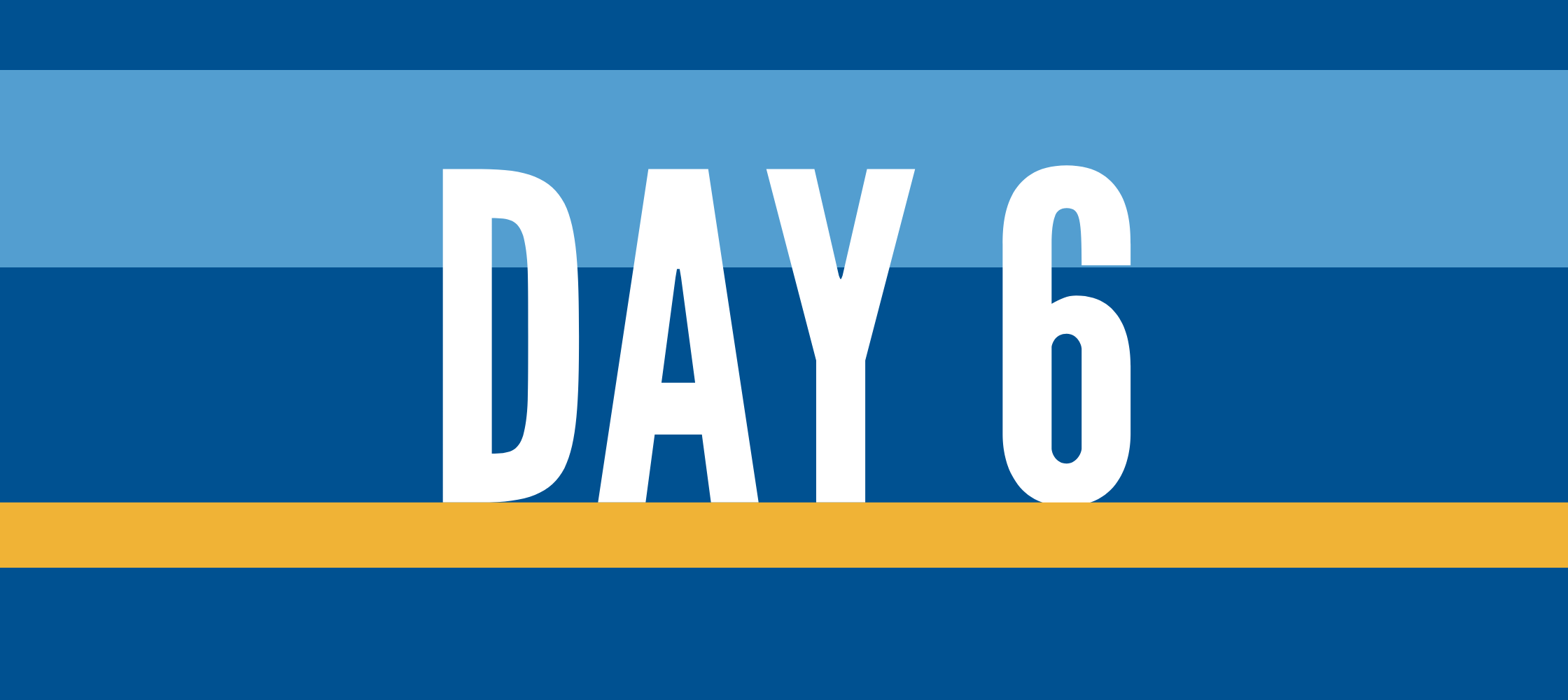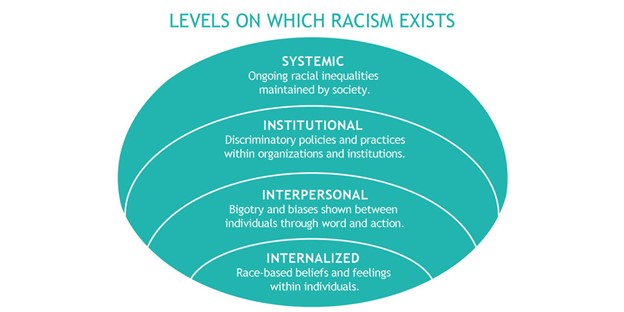
“Americans believe in the reality of ‘race’ as a defined, indubitable feature of the natural world. Racism—the need to ascribe bone-deep features to people and then humiliate, reduce, and destroy them—inevitably follows from this inalterable condition. In this way, racism is rendered as the innocent daughter of Mother Nature, and one is left to deplore the Middle Passage or Trail of Tears the way one deplores an earthquake, a tornado, or any other phenomenon that can be cast as beyond the handiwork of men. But race is the child of racism, not the father.”
-Ta-Nehisi Coates, Between the World and Me

This past week, we hope your personal equity journey was deepened through the topics and resources from each day. As we move into week two, prepare to shift your focus from the personal reflection that we have been exploring to a broader view of racial equity and social justice.
Are you seeing and addressing how racism operates at different levels? Dr. Camara Jones, Senior Fellow at the Morehouse School of Medicine, notes that to address racism effectively, we must understand how it operates at multiple levels. Often what we think of first and foremost is interpersonal racism. Once private beliefs come into interaction with others, racism is now in the interpersonal realm. Examples include public expressions of racial prejudice, hate, bias, and bigotry between individuals. Only seeing this level means that we fail to see the full picture that keeps the system of racism in place. The graphic below illustrates the domains in which racism operates.
Today’s Challenge
Read
- 5 Examples of Institutional Racism in the United States by Nadra Kareem Nittle (5 mins) https://www.thoughtco.com/examples-of-institutional-racism-in-the-u-s-2834624
Watch
- Check out this short video from Race Forward about the levels and the importance of looking at systemic, not simply individual, racism. (4:39) https://www.youtube.com/watch?v=LjGQaz1u3V4
- “Allegories on Race and Racism,” a TED-talk featuring four short stories to help us understand privilege and racism by Dr. Camara Jones. (20:31) https://www.youtube.com/watch?v=GNhcY6fTyBM
Discuss
- We learned about the four levels of racism and the need for a systemic approach to seeing and addressing oppression.
- Internalized– race-based beliefs and feelings within individuals
- Interpersonal – bigotry and biases shown between individuals through word and action. Often the most common understanding of racism in our country.
- Institutional – Discriminatory policies and practices within organizations and institutions.
- Systemic – ongoing racial inequalities maintained by society.
- How do these definitions compare with your personal understanding of racism? What are some of the ways that you see racism playing out around you at various levels?










